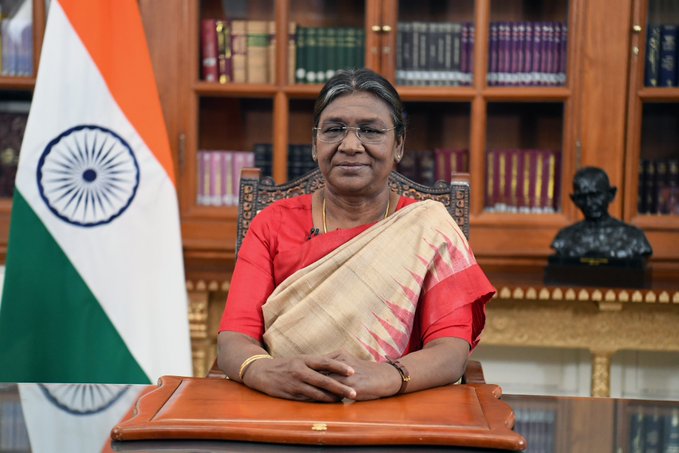Context:
Recently, the lower house of the Indian Parliament (Lok Sabha) adopted the Motion of Thanks to President’s Address.
About President’s Address
- The provision for Address by the Head of State to Parliament goes back to the year 1921 when the Central Legislature was set up for the first time under the Government of India Act, 1919.
- Being a statement of Policy of the Government, the Address is drafted by the Government who are responsible for its contents.
- It contains a review of the activities and achievements of the Government during the previous year and sets out the policies which it wishes to pursue about important internal and international problems.
- It also indicates the main items of legislative business which are proposed to be brought during the session to be held in that year.
Legal Basis for President address
The President may address both Houses of Parliament assembled or either House of Parliament separately in the following two cases:
(a) Article 86 (1) of the Constitution provides that the President may address either the House of Parliament or both Houses assembled, and for that purpose require the attendance of members.
- However, since the commencement of the Constitution, the President has not so far addressed either House or both Houses assembled under the provision of this article.
(b) Article 87 (1) of the Constitution provides that at the commencement of the first session after each general election to the House of the People and at the commencement of the first session of each year, the President shall address both Houses of Parliament assembled and inform Parliament of the causes of its summons.
When a session of Lok Sabha is not prorogued after being adjourned sine-die and subsequently re-convened to meet in the next calendar year, the President, in such cases, is not required to address both Houses of Parliament assembled.
Process of Motion of Thanks
Under rule 17 of the Rules of Procedure and Conduct of Business in Lok Sabha, discussion on matters referred to in the President’s Address takes place on a Motion of Thanks moved by a member and seconded by another member.
Motion of Thanks is a formal motion in Parliament to express gratitude for the President’s Address to both Houses.
Discussion in Parliament: The Motion of Thanks is discussed in both Houses of Parliament.
- Members can suggest amendments to the motion, which may either praise or criticize the government’s plans mentioned in the address.
Amendments: Members can propose changes to the motion based on what is or isn’t included in the President’s Address.
- If accepted, these amendments change the motion.
Conclusion of the Discussion: After the discussion, the Prime Minister or any Minister from the government responds.
- The Motion of Thanks is then put to a vote.
Importance: The Motion must be passed. If not, it shows that the government has lost the confidence of the House.
- This is a way for Parliament to express confidence (or lack of it) in the government.
Limitations: Members can only discuss issues related to the Central Government’s responsibility.
They cannot mention the President’s name in the debate.

